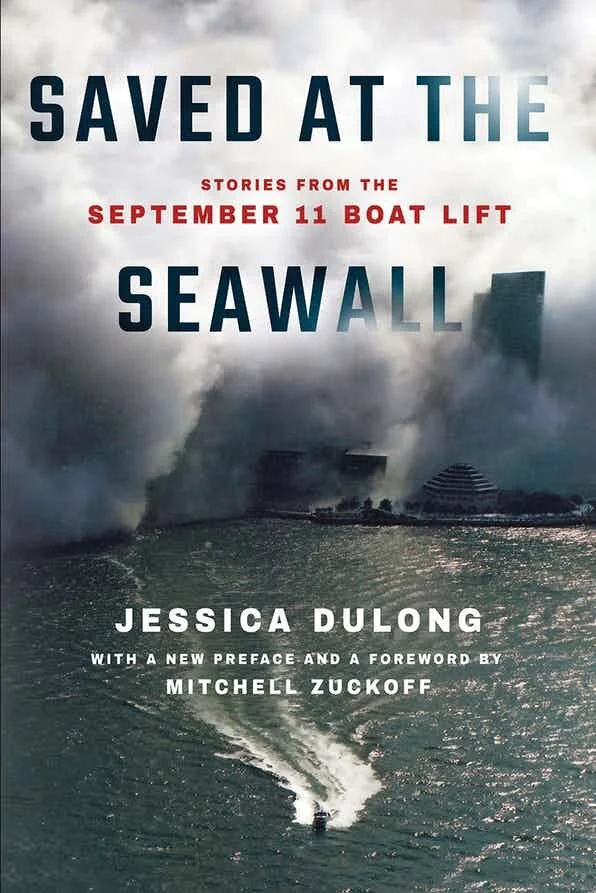Gotham
Excerpt: The Barbizon: The Hotel That Set Women Free
By Paulina Bren
There were two types of office-bound women. There were the secretaries who flooded New York’s shiny new skyscrapers in the 1920s and then hung on as best they could through the Great Depression. And then there were the women who had not just jobs but careers. Betsy Talbot Blackwell, or BTB, as she signed herself, was one of them.
Read MorePodcast Interview: Saved at the Seawall
Jessica DuLong interviewed by Robert W. Snyder
In Saved at the Seawall: Stories from the September 11 Boat Lift (Cornell University Press, 2021), Jessica DuLong reveals the dramatic story of how the New York Harbor maritime community heroically delivered stranded commuters, residents, and visitors out of harm's way.
Read MoreGotham and Untapped New York Team Up!
The Gotham Center is excited to announce our new partnership with Untapped New York. This partnership will include joint programming as well as a Gotham column in Untapped New York’s monthly newsletter highlighting some of the projects, programs, and scholarship coming out the of the Gotham Center.
Read MorePodcast Interview: Rockaway Blue
Larry Kirwan interviewed by Robert W. Snyder
Twenty years after the terrorist attacks of September 11, 2001, the novel Rockaway Blue (Cornell UP, 2021) probes the griefs, trauma and resilience of Irish American New Yorkers wresting with the deaths and aftershocks of that terrible day. The book weaves throughout New York City, from the Midtown North precinct in Manhattan to Arab American Brooklyn, but it is so grounded in the Irish section of Rockaway in the borough of Queens that Rockaway itself becomes a kind of character.
Read MoreWasted City: A History of Waste and Water Pollution in New York City
Reviewed by Erik Wallenberg
Coastal cities face a dizzying array of environmental problems, from rising seas due to climate change chaos, to polluted waters endangering fish, wildlife, and drinking water. New York City, rocked by Superstorm Sandy and struggling to rebuild a harbor ecosystem that can sustain edible fish and shellfish populations, is ripe for historical examination as environmental crises increase. Throughout its modern lifetime, New York harbor has experienced waste dumping, toxic pollution, a changing coastline, and growth as an international shipping port with attendant dredging issues, all of which we might look to for current context, historical lessons, and to help us better understand our relationship within this ecosystem.
Read MoreJames Rivington: Music Purveyor in Revolutionary New York
By Lance Boos
Printer and bookseller James Rivington arrived in New York in the autumn of 1760 with a hoard of books, pamphlets, sheet music, and instruments ready for sale. Rivington (the namesake of Rivington Street in lower Manhattan) went on to become a prominent figure in New York: he was a fervent Loyalist propagandist during the American Revolution, a spy for the Americans late in the war, and one of the first merchants in the American colonies to import and advertise a significant amount of music.
Read MoreNew Editors at Gotham!
We’re delighted to announce that we have once again expanded our team of editors here at Gotham.
Read MoreDid All Jews Become White Folks?:
A Fortress in Brooklyn and Hasidic Williamsburg
Reviewed by Gabe S. Tennen
In A Fortress in Brooklyn: Race, Real Estate, and the Makings of Hasidic Williamsburg, Nathaniel Deutsch and Michael Casper add an important wrinkle into prevalent understandings of American Jewish history. Deutsch and Casper focus their text on the Hasidic Satmar sect and its creation of a “holy city of Jerusalem” in one corner of north Brooklyn, tracing that community from its nascent beginnings in the 1940s into the 21st century. By offering a detailed and crisply written account of this often discussed but largely underexamined group, the authors provide a caveat to nearly fifty years of scholarship.
Read More


